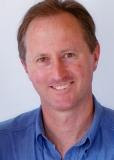Your Philosophy May Be Vitalistic, But Is Your Art Mechanistic?
What is Vitalism?
1) Theory that life originates due to a force distinct from chemical and other physical forces. The classical 18th century vitalist doctrines propose that all life phenomena are animated by immaterial life spirits. These life spirits are unexplainable and undescribable from a physical point of view, but determine the various life phenomena.
2) Where vitalism explicitly invokes a vital principle, that element is often referred to as the "vital spark," "energy" or "élan vital," which some equate with the "soul." Vitalism has a long history in medical philosophies: most traditional healing practices posited that disease was the result of some imbalance in the vital energies which distinguish living from non-living matter.
3) Was once a term of Aristotle pertaining to a cosmic force known as "ether" that was supposedly giving life to dead things.
Chiropractic has a vitalistic philosophy in the sense that we claim we all have an innate intelligence which gives our human bodies their healing potential - the ability to intelligently regenerate. To take this one step further, it was proposed by our pioneers that this information is transmitted through the body via the "Mental Impulse". This is a separate and distinct concept to that of action potentials and electrical currents...
D.D. Palmer: "Chiropractors do not treat diseases, they adjust the wrong which creates disease; they have discovered the simple fact that the human body is a sensitive piece of machinery, run throughout all its parts by mental impulse." (1910)
Stephenson: "We might conceive of this mental impulse as being composed of certain kinds of physical energies, in proper proportions, which will balance other such forces in the Tissue Cell; as electricity, valency, magnetism, cohesion, etc., etc.. Perhaps some of these energies are not known to us in physics. What right have we to assume that we have found them all? The writer presents this as a hypothesis or theory in order to get a working basis... It is no discredit to Chiropractic that it must also use theories concerning the transmission of mental forces." (1927)
So, here's the challenge - how does this affect the way we adjust each and very patient? Is our application, or the "Art" of doing what we do, a reflection and outpouring of this vitalistic philosophy? Let's contrast the above definitions of vitalism with those of mechanism...
Mechanism:
1) Machine part: A machine or part of a machine that performs a specific task.
2) Something like machine: Something that resembles a machine in having a structure of interrelated parts that function together the fragile mechanism of the planet's ecology.
3) Method or means: A method or means of doing something.
4) Philosophy philosophical theory: The philosophical theory that all natural phenomena, including human behavior, can be explained by physical causes and processes.
To be perfectly honest - this sounds more like the practice of chiropractic as it is practised in most chiropractors' rooms.
Now here's the challenge: If we have a vitalistic philosophy, but this has no application in what we do - then what's the point of having this philosophy? After all - isn't the purpose of a philosophy to provide an internal compass, via which we make decisions about what we think and believe, and hence how we behave?
This leaves us with two options...
1) Jettison our traditional philosophy and replace it with one that sounds more like the mechanistic methods - so that our Art follows on from our philosophy - that is - change our philospophy to match our behaviour.
2) Upgrade our behaviours so that they align with our core vitalistic philosophy.
Torque Release Technique provides chiropractors with a much more vitalistic model of applying their philosophy on each and every patient. And here's what most practitioners find when they make this upgrade - they see more vitalistic changes in their practice members: Over and above the garden variety mechanistic changes - That is - they see MORE LIFE returning into the faces, minds and bodies of their patients.
Sunday, October 7, 2007
Subscribe to:
Post Comments (Atom)


No comments:
Post a Comment